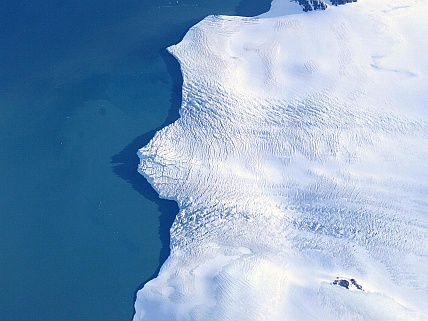
Stephen Howell (Early Adopter)
Environment and Climate Change Canada
Applied Research Topic:
Use of ICESat-2 data for Environment and Climate Change Canada observational applications and prediction systems.
Potential Applications:
Climate data records; operational sea ice forecasting for Arctic shipping; sea ice info for mariners; weather hazards; prevention/mitigation of atmospheric catastrophes
Abstract:
ICESat-2 data will be used for a variety of research activities (i.e. climate data records, seasonal and decadal model validation and optimization, ice operations and understanding variability and change) at Environment and Climate Change Canada. Specifically, ICESat-2 will be used to validate and optimize simulated sea ice thickness from Environment and Climate Change Canada’s operational sea ice forecasting systems: the Global Ice Ocean Prediction System (GIOPS) and the Regional Ice Prediction System (RIPS). We will also explore the possibility of assimilating freeboard data to improve our ice-ocean analyses in order to get better initial conditions for GIOPS and RIPS sea ice forecasts. Accurate sea ice thickness data is crucial for mid-range forecasts as well as for correctly simulating short-term events such as ice internal pressure buildups (which are very important for navigation purposes). The latter work will be done in collaboration with the Canadian Ice Service in order to provide operationally up to date and accurate sea ice information to mariners. ICESat-2 estimates will also be validated and integrated with in situ thickness observations at long-term monitoring sites within the Canadian Arctic for the purpose of understanding sea ice variability and change. In this regard they will also be used to estimate ice volume flux through the Canadian Arctic from Environment Canada’s new RADARSAT-2 automated sea ice tracking system. Finally, ICESat-2 will also be used to validate ice thickness output from the Canadian Centre for Climate Modelling and Analysis (CCCma) CanCM3 and CanCM4 global climate models.
SDT Member Partner:
Co-Investigator(s):
- Dr. Chris Derksen, Environment and Climate Change Canada, ICESat-2/MABEL terrestrial evaluation; field validation
- Dr. Stephen Belair, Meteorological Research Division, Integrating ICESat-2 with land surface model and data assimilation
- Dr. Gregory Smith, Meteorological Research Division, Ice-Ocean Forecasting and Prediction integrating ICESat-2
- Dr. Jean-Francois Lemieux, Meteorological Research Division, Ice-Ocean Forecasting and Prediction integrating ICESat-2
- Dr. Mark Buehner, Meteorological Research Division, ICESat-2 and Data Assimilation
- Mr. Matt Arkett, POC Canadian Ice Service
End Users:
- Climate Research Division (POC: Howell)
- Canadian Meteorological Centre (POC: Belair)
- Canadian Ice Service (POC: Arkett)
- Canadian Centre for Climate Modelling and Analysis (POC: Derksen).


